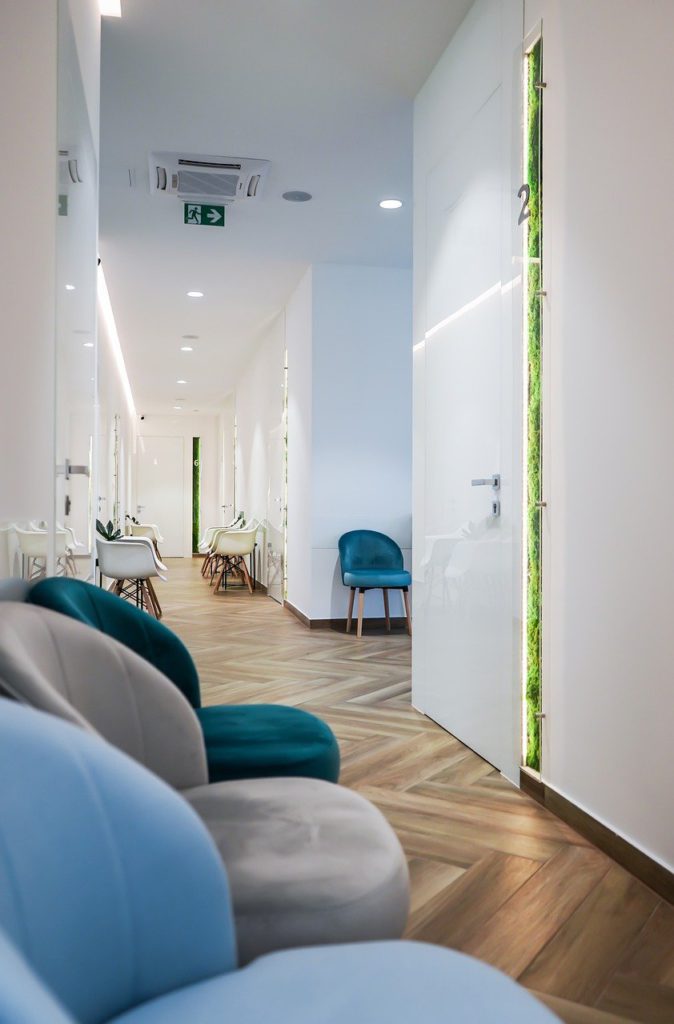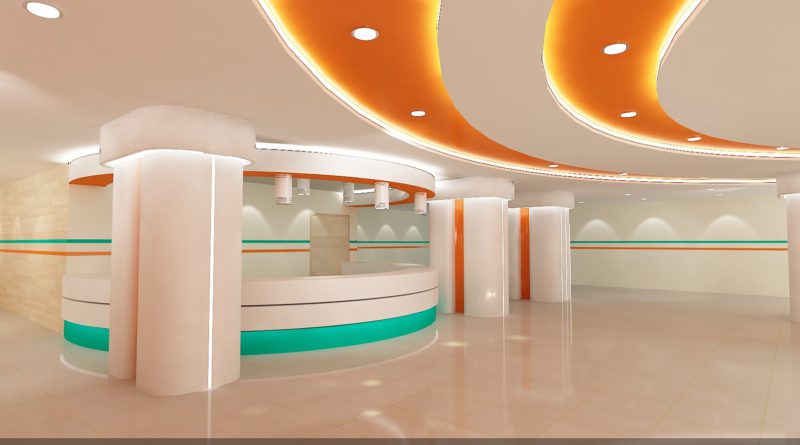Adding Natural Elements In Your Medical Practice Fitout
Humans naturally like to be close to living things, so a great way to incorporate natural elements into your medical practice is to use plants. In addition to the potted plants, we typically consider for our homes and offices, there are other creative ways to maximize the natural amount of office space without sacrificing floor and desk space. Incorporating plants, trees, fountains, and nature imagery are all ways to add biophilic elements to office space, increase employees’ connection to nature, and reap the rewards of nature.
The idea of incorporating nature into the built environment through biophilic design is not as often viewed as a luxury in the modern workplace, but rather as a smart economic investment in the health, well-being, and productivity of employees. In its most basic form of biophilic programming, the biophilic design represents the theory, science, and practice of building revitalization and aims to keep people connected to nature in artificially created environments, such as offices, where we live and work every day. As our understanding from an academic perspective expands and designers innovate from a practical and aesthetic perspective, biophilic design will play an increasingly important role in commercial buildings.
Our recent project understands that the medical experience can be overwhelming and aims to optimize patient outcomes through design. The experience and understanding of medical design professionals come from decades of working with healthcare providers of all sizes in New South Wales, connecting clinic owners with a design plan that fits their brand, staff, and patients. By consulting with medical design experts, you can develop detailed terms of reference, quickly create initial sketches, and obtain the necessary approvals to advance your project.
Elite’s in-house architectural design team is ready to help you bring your doctor’s office layout plans to life. By investing in quality medical equipment, you can benefit from innovative design elements that will make your business more welcoming and professional. While most of the medical clinic interior design ideas we mentioned above are about making your patients feel more comfortable, remember that you can’t ignore the comfort of your employees either.
When it comes to interior design ideas for a medical clinic, the requirements and expectations of patients, visitors, doctors, nurses, technicians and all other employees must be considered. What you need is a bunch of effective medical fit out ideas to ensure that every aspect of your facility looks professional while exuding a sense of comfort and relaxation. To help you design the perfect workplace for your brand and patients, there are three key concepts to keep in mind when creating a great clinic design.
The design and construction of your practice affect not only how healthcare professionals and their teamwork in the environment, but also the experience the space offers to patients visiting the practice. Clinic owners now understand that the appearance of their premises has a significant impact on the psyche and overall well-being of patients. Our work with healthcare professionals has shown us that they are now looking for an adaptive solution that demonstrates the exquisite balance of interior design, space flow, practicality and functionality.
As mentioned above, some design styles have a noticeable impact on how patients experience your practice. The effect of colour on mood and open plan style are examples of common trends in medical design.
Biophilia is the incorporation of elements of nature into interior design, such as potted plants, wood floors, and stone benches. With numerous studies showing improved well-being through communion with nature, it makes sense that interior design incorporates and emulates aspects of nature, especially those that originate from the location of the project. However, living plants, other design elements such as nature-inspired art, creative use of light and shadow, and even subtle sound effects and scents can bring a sense of nature into a workspace.

To achieve the effect of mimicking the outdoor environment, the designer might consider including plants of different heights and textures, scattering the plants around the space, and grouping some to mimic how the plants look in nature. Plants and flowers do more than just add the finishing touches to an interior, they can create a completely different atmosphere in a room. Another important design element that helps bring local nature into sanitary facilities is texture.
By applying these principles to lighting, colour and texture, designers can successfully use lighting to bring the benefits of nature into healthcare fitout. From skylights to water features, you can get creative by incorporating nature into your medical centre. Being outdoors is very healing and you can bring the natural world into your clinic by using natural materials like plants, natural images and wood.
By integrating elements of the natural world into your clinic design, you will relax your patients and open up the space. From houseplants that reduce air pollution to natural elements that improve your mood, there’s a lot to be gained by incorporating outdoor recreation into your medical training. By incorporating natural elements into your clinic design, you can help reduce your patients’ stress levels and improve their well-being, making their visits more relaxing and comfortable. By taking design cues from local landscapes, geographic features, and panoramic views, designers can create designs that feel more comfortable, perform better, and work mind, body, and spirit to promote well-being.
In this article, we’ll look at a range of design options for adding nature-inspired elements to your medical practice environment. Design and fit out companies are an integral part of the design team, able to create a comprehensive, balanced, and cohesive design using concepts naturally found in the region. Healthcare fitout often have retail spaces, such as pharmacies or bars, where biophilic design can encourage patients to spend more time and money. Medical facilities are often perceived as sterile and cold environments, however, the biophilic design goes against natural ingredients that create a more welcoming space for interest.

